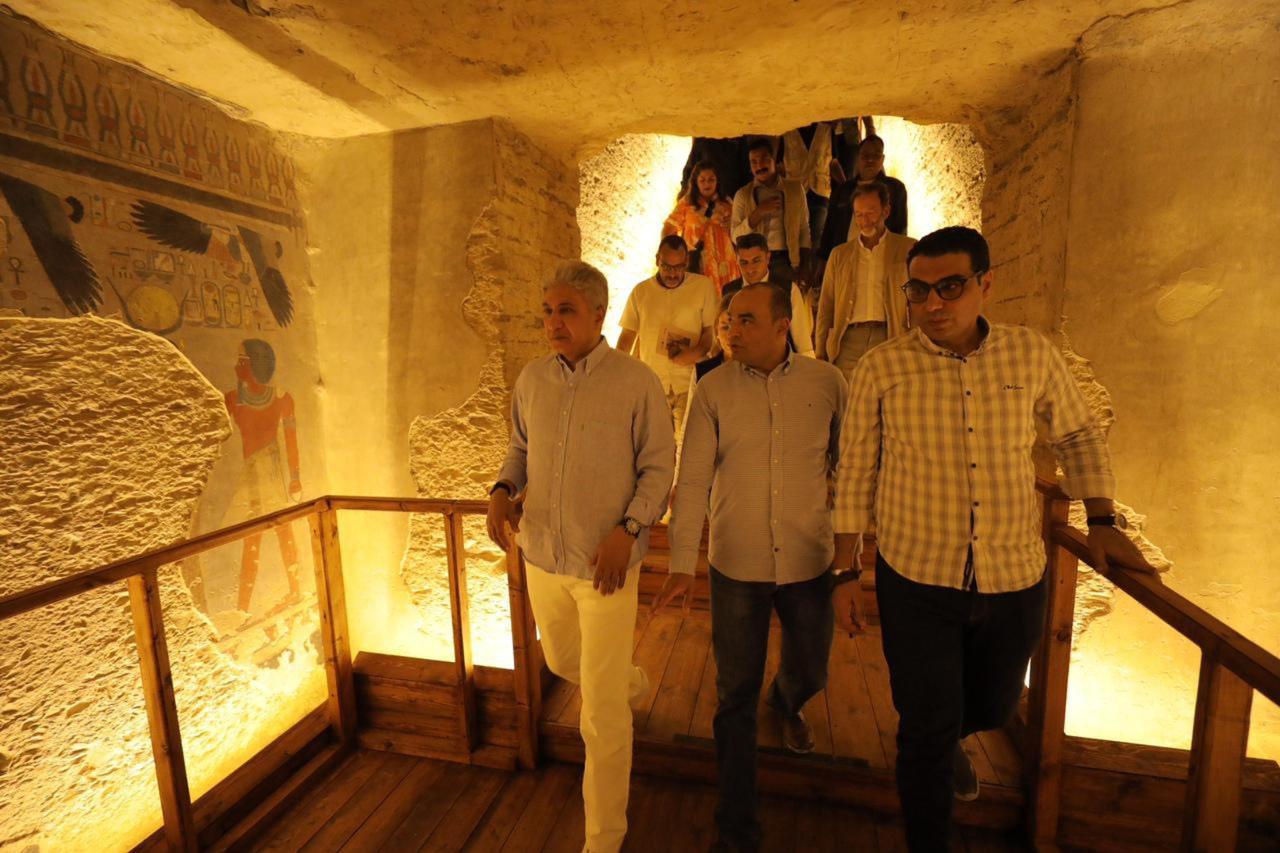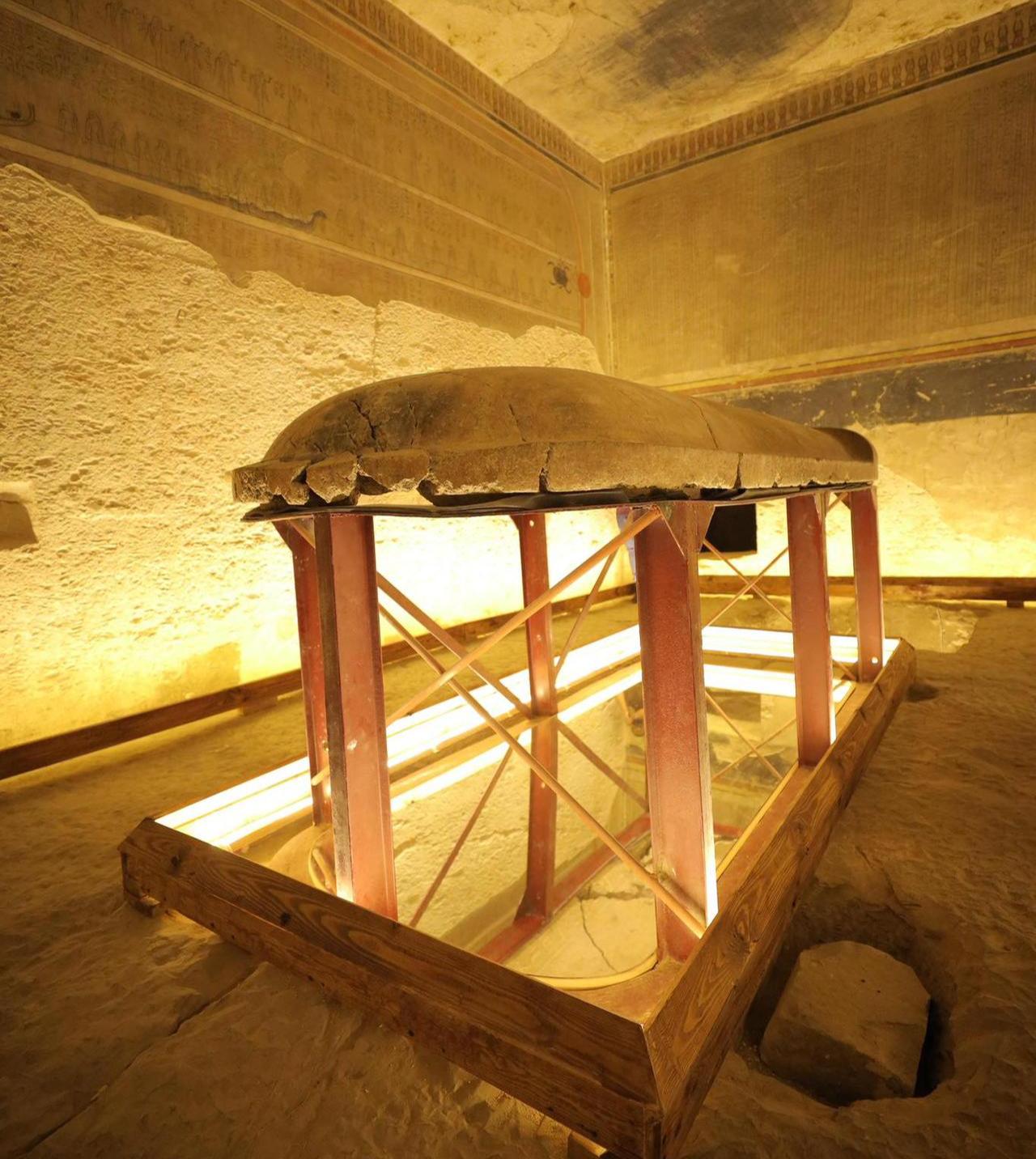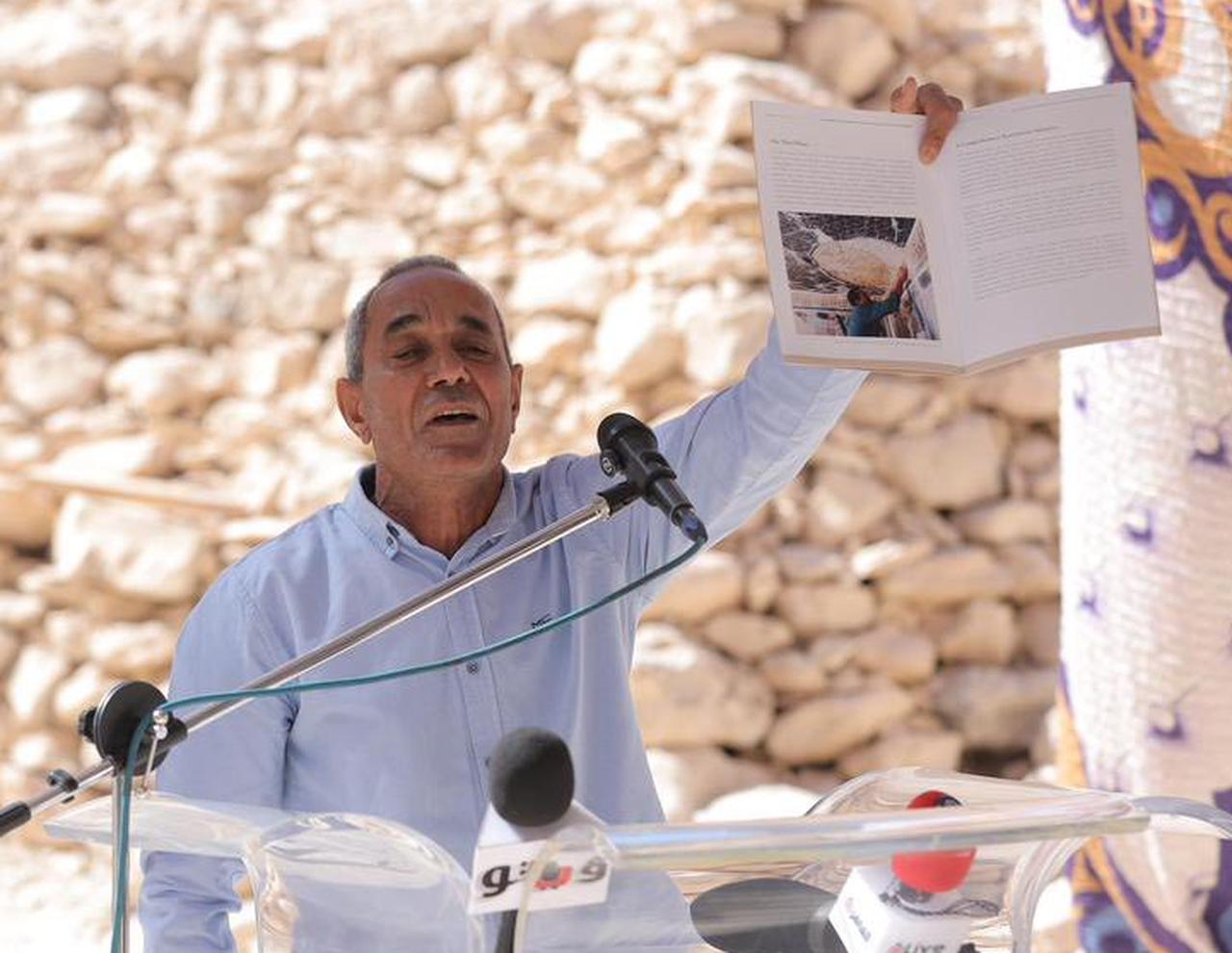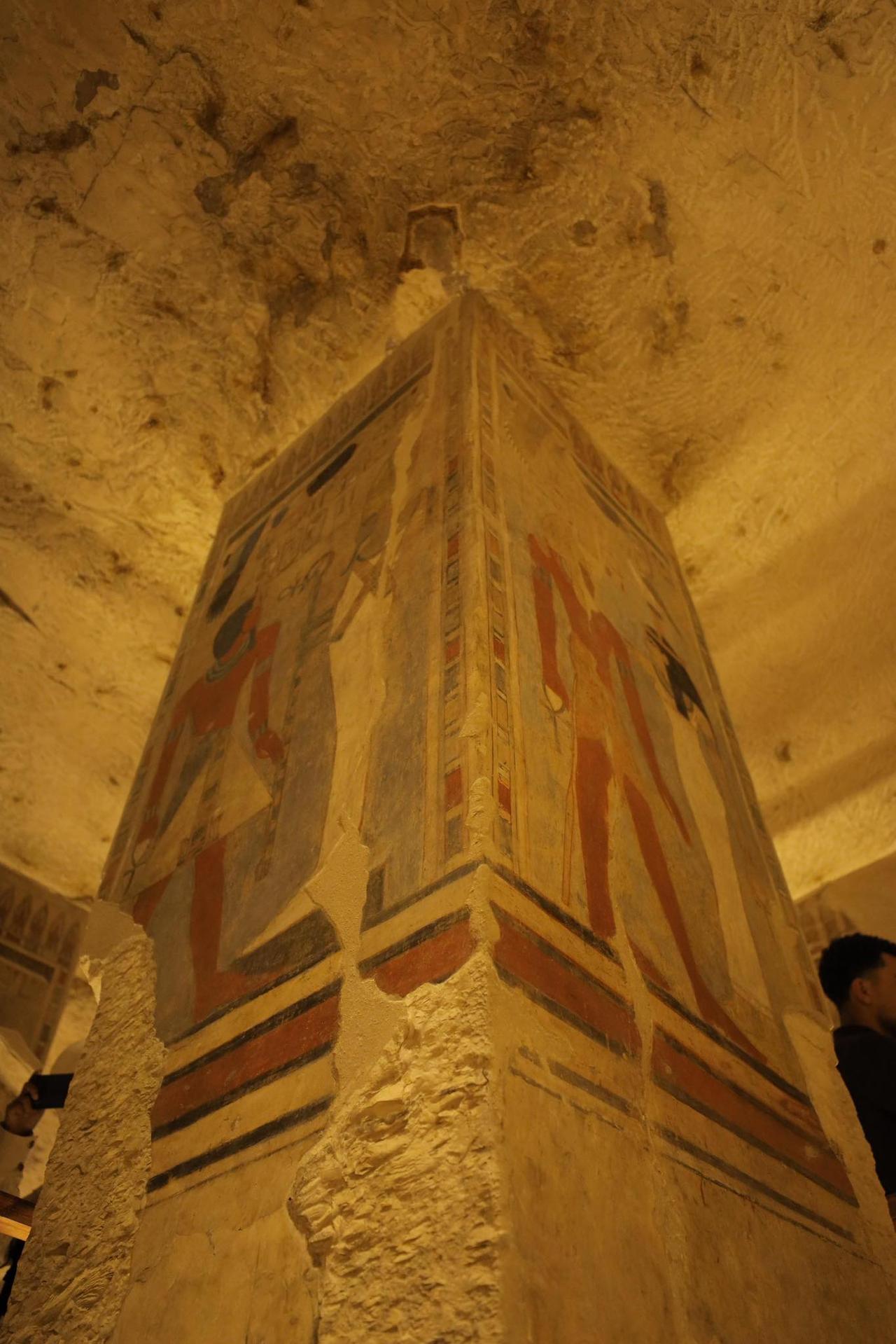
The ancient city of Luxor in southern Egypt witnessed on Saturday the opening of a royal tomb, nearly 226 years after its discovery.
Located in the Valley of the Kings—an area renowned for its dozens of rock-cut tombs built for the pharaohs of ancient Egypt in the Theban necropolis on Luxor’s west bank—the tomb belongs to King Amenhotep III, one of the most powerful rulers of the 18th Dynasty.
Egypt’s Minister of Tourism and Antiquities, Sherif Fathy, inaugurated the tomb in the presence of senior officials from the Luxor Governorate and the Supreme Council of Antiquities.
According to the ministry, the tomb—discovered in 1799—underwent 20 years of restoration and preparation for visitors, with support from UNESCO and the Japanese government.

That was part of the “Preservation of the Wall Paintings in the Tomb of King Amenhotep III” project.
The tomb of King Amenhotep III was discovered in 1799 by French engineers Prosper Jollois and Edouard de Villiers du Terrage during the French campaign in Egypt.
However, evidence suggests that the site had been known earlier, as it was mentioned in the travel writings of British explorer William George Browne.
The tomb’s conservation project included meticulous architectural restoration, the installation of environmental control systems, and the collection and restoration of numerous artifacts discovered inside the burial chamber.
Egypt’s Minister of Tourism and Antiquities made a point of inviting Egyptian restorer Mohamed Mahmoud—who had participated in the tomb’s restoration from the very beginning and happened to be in the area—onto the celebration platform.
Mahmoud shared with attendees his overwhelming joy at seeing the fruits of his work culminate in the tomb’s reopening.
Mahmoud expressed that his happiness on this historic day was indescribable.
He noted that despite having reached retirement age, he insisted on attending specifically to witness the fulfillment of a dream to which he had dedicated over 20 years of his professional life.

The project to preserve the wall paintings in the tomb of King Amenhotep III was carried out in three consecutive phases.
Nuria Sanz, Director of UNESCO’s Regional Office in Cairo, explained that the first phase took place between 2001 and 2004, followed by the second from 2010 to 2012, while the third and final phase was launched in 2023 and continued through 2024.
An international team of Egyptian, Italian, and Japanese restoration experts participated in the project, bringing a significant leap in the preservation and restoration work within the royal tomb.
The restoration efforts also involved specialists in stone conservation, wall painting preservation, architectural and civil engineering, rock monitoring, 3D scanning and Egyptology.
During the first and second phases, the work focused on maintaining and restoring the unique wall paintings that adorn the walls, columns, and ceilings of chambers E, I, and J of the tomb.
Significant progress was also made in restoring the king’s red granite sarcophagus lid, successfully reassembling over 200 of its pieces.

The tomb of King Amenhotep III is one of the largest royal tombs on Luxor’s west bank and reflects the artistic and cultural flourishing of Egypt’s New Kingdom period.
It is distinguished by its unique decorations and colorful reliefs depicting religious and symbolic scenes of the king’s journey in the afterlife and interactions with the gods and with the spirit of his father.
The ceiling is adorned with yellow stars on a deep blue background, representing the sky, while the walls of the burial chamber feature inscriptions from the Book of the Dead.
Archaeological evidence indicates that work on the tomb began during the reign of Pharaoh Thutmose IV, whose name was found inscribed in the foundation trenches, while his son, King Amenhotep III, completed its construction and decoration.
During the reign of Pharaoh Smendes of the 21st Dynasty, Amenhotep III’s mummy, along with other royal mummies, was moved to the Royal Cache in the tomb of Pharaoh Amenhotep II (KV35) after the original tomb was looted during periods of unrest in ancient Egypt.
Some archaeological evidence indicates that the tomb was later reused during the Third Intermediate Period.